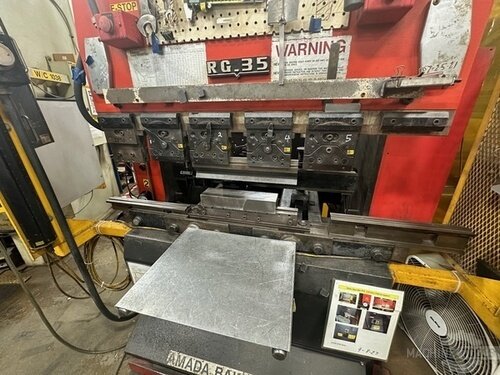By Joe Ryan, President of Mac-Tech
As someone who has spent years navigating the intersection of finance and leadership, I approach the challenges facing the metal fabrication industry with a clear focus on sustainable business growth and operational excellence. At Mac-Tech, our strategy is deeply informed by this perspective—we understand that workforce shortages aren’t just a labor issue; they’re a critical factor influencing ROI, market positioning, and long-term viability. By leveraging automation and retention strategies, we help fabricators scale efficiently while maintaining a competitive edge in a rapidly evolving marketplace.
Our approach is rooted in practical financial analysis and lean operational principles. We know that every dollar invested in technology or workforce development must deliver measurable returns. That’s why Mac-Tech’s solutions are designed not only to address immediate labor gaps but also to optimize throughput, reduce waste, and enhance product quality. This dual focus on automation and people ensures our clients can confidently expand their market share without sacrificing profitability.
Driving Market Growth Through Automation and Retention
The metal fabrication industry is at a pivotal moment. Workforce shortages have made it increasingly difficult for companies to meet growing demand, especially as market opportunities expand both domestically and internationally. Automation is a critical lever here—it allows fabricators to scale operations without the proportional increase in labor costs or training overhead. From CNC machines to robotic welding cells, the right technology can dramatically improve cycle times and consistency, which directly translates into faster delivery and higher customer satisfaction.
But automation alone isn’t enough. Retention strategies are equally vital for sustaining growth. Skilled operators and technicians bring invaluable expertise that machines cannot replace. At Mac-Tech, we emphasize a balanced approach: integrating advanced machinery with workforce development programs that foster employee engagement and career progression. This combination reduces turnover, preserves institutional knowledge, and ultimately drives operational efficiency. When your team feels valued and empowered, productivity rises—and so does your bottom line.
1990 Accurpress 7606
- Capacity: 60 T x 72″
- Weight: 6,000 lbs.
- Dimensions: 84″L x 40″W x 70″ H
- Ram stroke: 8″
1992 Accurpress 750024
Mac-Tech’s Strategic Solutions Boost Metal Fab ROI
From a financial standpoint, investing in automation and retention is about maximizing ROI over the long term. I often draw on my background in finance to help clients understand the total cost of ownership—not just the upfront capital expenditure but the ongoing savings from reduced labor costs, fewer errors, and less downtime. Our lean analysis tools enable fabricators to identify bottlenecks and prioritize investments that yield the highest returns, whether that’s upgrading plasma cutting systems or implementing real-time production monitoring.
Mac-Tech’s portfolio of solutions is tailored to meet these needs. We offer state-of-the-art machinery designed for precision and reliability, alongside software platforms that streamline workflow and data management. More importantly, we partner with clients to develop retention initiatives that align with their operational goals—such as cross-training programs and incentive structures. This holistic approach ensures that every dollar spent contributes to scalable growth, improved margins, and a stronger competitive position in the metal fabrication market.
FAQ
What is the typical ROI timeframe for automation investments in metal fabrication?
ROI can vary depending on the scale and type of automation, but most clients see payback within 18 to 36 months. Factoring in labor savings, increased throughput, and reduced scrap, the financial benefits often accelerate beyond initial projections.
How does Mac-Tech help companies manage the upfront costs of automation?
We work closely with clients to perform detailed cost-benefit analyses and explore financing options. Leveraging my background in finance, I guide companies through budgeting and capital allocation strategies that align with their growth plans and cash flow realities.
Can automation solutions adapt to fluctuating market demand?
Absolutely. Modern automated systems are designed with flexibility in mind, allowing fabricators to scale production up or down efficiently. This adaptability is crucial for managing inventory levels and responding to customer needs without overextending resources.
What role does employee retention play in overall operational efficiency?
Retention is critical. Experienced employees reduce errors, improve machine uptime, and contribute to continuous improvement initiatives. Investing in workforce development complements automation by ensuring that technology is used to its fullest potential.
How can Mac-Tech support companies looking to expand into new markets?
We provide not only the equipment but also strategic consulting to optimize production processes for new product lines or volume increases. Our solutions help clients maintain quality and delivery standards that are essential for successful market expansion.
Are there financial risks associated with delaying automation upgrades?
Delaying automation can increase labor costs, reduce competitiveness, and limit capacity to meet demand. From a financial perspective, these risks often outweigh the initial investment costs, making timely upgrades a prudent business decision.
I invite you to reach out and explore how Mac-Tech can help your metal fabrication business overcome workforce challenges through smart automation and retention strategies. Together, we can build a more efficient, profitable, and resilient operation ready for the future.
Get Weekly Mac-Tech News & Updates







